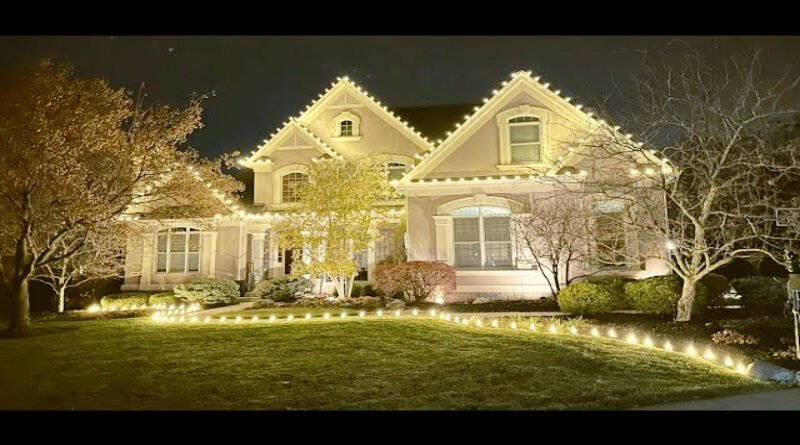How to Safely Run Extension Cords for Outdoor Holiday Displays
Holiday ornament transform ordinary homes into radiance land. From sparkling string lights to animated displays. These setups spread cheer throughout the season. But behind the appearance lies a hidden risk: extension cords. When used improperly open air, they can become fire hazards, shock risks, or lilting dangers turning joy into hazard.
That’s why learning safe delay cord practices is essential. Whether you’re pendant twinkling lights along the roofline or powering festive yards expansively. Proper planning keeps your home bright and your house safe. In this guide, we’ll cover the necessary from choosing outdoor-rated cords to using GFCI outlets, to help you create a holiday show that shines without risk.
Why Safety Matters with Outdoor Extension Cords
Using delay cords improperly outdoors is one of the primary causes of residential electrical fires, shocks, and circuit failures. The insularity on cords can degrade in sun, cold, or wet. Cords can be pinched or trampled and tons can make them heat and spark.
Given that vacation displays often stretch over roofs, through plot, and across walkways. It’s especially critical to plan thoughtlessly. Professional services such as Christmas lights installation in Bryan, TX follow these safety principles to ensure every setup shines attractively and safely.
Choosing the Right Extension Cord
Indoor-rated vs Outdoor-rated
Never use indoor-only cords outdoors. Indoor cables aren’t built for wet, UV, or temperature variation. Instead, use cords generally rated for outside use (look for markings such as “W,” “W-A,” or “Outdoor Use”). These cords have heavier insularity, greater durability, and better resistance to biology stress.
Gauge, Ampacity & Length
To avoid heating or voltage drop, choose a cord gauge that Match your load and length. Thicker wires (lower AWG numbers) handle more actual over longer runs. When combine multiple lighting strands or devices. Always check the electrical phenomenon or wattage rating on both the cord and the inclination.
Many experts urge sizing your cord so you stay well below its maximal rating (for example, using no more than ~ 80% of its capacity).
Certification & Inspection
Always pick cords with attest (e.g. UL listed or equivalent), and inspect each one before installation. Look for cracks, open wiring, loose plugs or broken insularity. Discard any that show damage.
Preventing Overloads & Safely Distributing Power
Overloading extension cords is a major cause of vacation display failures and fire hazards. Every cord has a electrical power or amp rating and exceptional it can lead to overheating. A simple rule: keep your load under 80% of the cord’s maximal capacity. Always add up the wattage of lights and décor before stopper them in.
Distribute power wisely instead of using a single outlet for everything. Usage multiple cords or circuits, choose dense gauges for longer runs and defend all connections with GFCI outlets. This way, your show will shine brightly without stressing your electric system.
Routing Cords & Securing Connections
Keep cords off the ground when doable, avoid pinch points and never staple or nail them. Use secure connectors and covers for safe, abiding holiday setups.
Safe Placement Tips
Don’t run cords done doors or windows. Use clips, grommets or outdoor outlets instead to prevent affray, water damage and lilting hazards.
| Safety Step | Do This ✅ | Avoid This ❌ |
| Cord Type | Use outdoor-rated, “W” marked | Using indoor cords outside |
| Load Limits | Stay under 80% of rating | Overloading a single circuit |
| Protection | Use GFCI outlets or cords | Plugging into unprotected outlet |
| Placement | Clip cords, keep off ground | Letting cords sit in puddles |
| Connections | Weatherproof boxes or covers | Exposed plugs in the open |
| Storage | Dry, cool place, loosely coiled | Leaving cords outdoors all year |
Testing, Inspection & Maintenance
Pre-Power On Checks
Before turn everything on:
- Inspect every cord segment for damage.
- Plug in one section at a time to test for overloads or GFCI trips.
- Check that plugs are fully inserted and tight.
During Operation
Keep an eye on cords for liquescent, bubbling or unusual heat. Never leave cords coiling while energized heat builds up externally and may cause insularity to fail.
Post-Season Storage
After the time period, unplug, clean, dry, then coil slackly and store in a dry area. Avoid leaving cords open to elements year-round.
Conclusion
Your outside holiday display should daze without risk. By using outdoor-rated extension cords, regard load limits, employing GFCI protection, routing cablegram carefully and maintaining vigilance through review and testing. You can enjoy peace of mind all season long.
For a polished, worry-free solution handled by nonrecreational. Check out Christmas lights installing in Bryan, TX, their expert setup reflector the safety rule laid out here.
Also visit Digital Global Times for more quality informative content.

